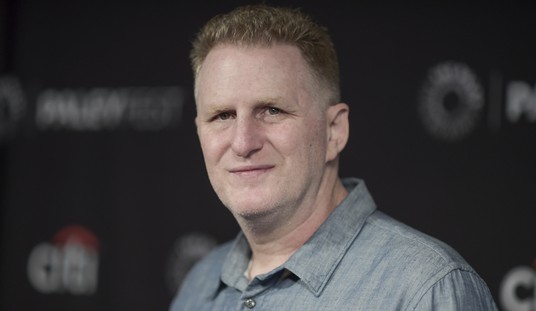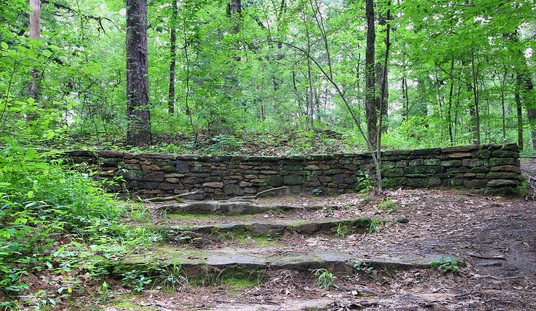An exclusive CBC bylined by Neil Macdonald strongly suggests that the International Tribunal charged with investigating the assassination of Rafik Hariri should indict Hezbollah and name Damascus as the mastermind. But as the Los Angeles Times points out, the Tribunal has attempted to reach every other conclusion but this. “The lengthy report also tarnishes the work of the Special Tribunal for Lebanon, suggesting it repeatedly dismissed the findings of its own investigators and suppressed suspicions out of political considerations, potentially emboldening Hezbollah in its effort to force the government to disavow the tribunal’s work.”
One of the problems is the Special Tribunal has been told, in no uncertain terms, that they had better not find a connection between Hariri’s death and the Party of God. Lebanon Now quoted a report in Al-Akhbar, a newspaper close to Hezbollah, outlining plans to take over Lebanon in the event Hezbollah members are indicted by the international tribunal investigating the assassination of Rafik Hariri. This includes offensives into Sunni and Christian areas and the siege of Saad Hariri’s stronghold in Beirut. The Los Angles Times wrote:
“Hezbollah has come to the conclusion that anything short of vindication of all accusations will not be acceptable,” said Kamel Wazne, founder of the Center of American Strategic Studies in Beirut, a think tank that covers regional issues. … Regional powers have embarked on a flurry of diplomatic meetings in an effort to stave off an escalation of already-high tensions.
The CBC report describes how the Hezbollah penetrated the Tribunal from the beginning and killed Lebanese investigators who worked to expose it. “Among other things, CBC News has learned that:”
- Evidence gathered by Lebanese police and, much later, the UN, points overwhelmingly to the fact that the assassins were from Hezbollah, the militant Party of God that is largely sponsored by Syria and Iran. CBC News has obtained cellphone and other telecommunications evidence that is at the core of the case.
- UN investigators came to believe their inquiry was penetrated early by Hezbollah and that that the commission’s lax security likely led to the murder of a young, dedicated Lebanese policeman who had largely cracked the case on his own and was co-operating with the international inquiry.
- UN commission insiders also suspected Hariri’s own chief of protocol at the time, a man who now heads Lebanon’s intelligence service, of colluding with Hezbollah. But those suspicions, laid out in an extensive internal memo, were not pursued, basically for diplomatic reasons.
The most crucial leas from the beginning were provided by traffic analysis. A British expert hired by the Tribunal requested the phone records of every single phone call made in Lebanon in the year of the assassination. The longest part of the process was the 3 years the UN staff spent laboriously entering the information into IBase. Then the British expert spent 2 days analyzing the data for patterns. He called the UN investigators together announcing he had identified a small network of mobile phones, eight in all, that had been shadowing Hariri in the weeks prior to his death. … What the British analyst showed them was the comms trace of the the hit squad that had carried out the murder. “For the first time, commission investigators were staring at their quarry. The trouble was, the traces were now nearly three years old, long past the ‘golden hour’ for harvesting the best clues.”
The British analyst wrote the report identifying Hezbollah as the probable culprits but in a process CBC does not quite explain, the UN commission “promptly lost it.” One branch of the investigation went dead. But there was a second man on the track of cell phone records, a counterterrorist investigator named Wissam Eid. Eid began by finding the assassin’s tactical comm network. He did this via a less computationally intensive method, by first obtaining the cell phone records handled by the towers around the assassination site.
Once Eid had those records, he began thinning out the hundreds of phones in the area that morning, subtracting those held by each of the 22 dead, then those in Hariri’s entourage, then those of people nearby who had been interviewed and had alibis.
Soon enough, he had found the “red” phones the hit team had used.
After identifying the tactical comm network, Eid tried to establish how the circuit communicated with the next layer up. The Lebanese officer did this by looking for cell phone SIMs which surfaced in statistical correlation with the “red” phones. “What Capt. Eid had discovered was that everyone on the hit team had carried a second phone, and that the team members had used their second phones to communicate with a much larger support network that had been in existence for at least a year. Eventually, the UN would label that group the ‘blue’ network.”
Now all he had to do was find the men that used the phones. His break came when the hit team dumped their phones on a “minor electronics specialist” who used the unused time on the phones to call his girlfriend. Eid had set up a trigger to signal him if one of the phones was used and he was on the electronics specialist like white on rice. He “led Eid to a pair of brothers named Hussein and Mouin Khreis, both Hezbollah operatives.” From there the Lebanese investigator worked his way to what was termed the “pink” network, which led via land lines to “Hezbollah’s Great Prophet Hospital in South Beirut, a sector of the city entirely controlled by the Party of God. … Eventually, telecom sleuths would identify another network of four so-called “pink phones” that had been communicating both with the hospital and, indirectly, with the other networks.”
Then the worst possible thing happened.
The breadcrumbs led right back inside the Lebanese government. One can almost imagine the chill than ran through the doomed counterterrorist officer’s spine as he found the trail doubled back to a mastermind inside the very government he was working for. Whoever was behind Hariri’s killing was on the inside, not on the outside. Not long after, Eid was warned to back off by the Hezbollah but he reported his findings to the UN. How did they know he was after them?
Nevertheless Eid persisted. It was to cost his life. “Eight days after his first meeting with the UN investigators, Capt. Wissam Eid met precisely the same fate as Hariri. The bomb that ripped apart his four-wheel-drive vehicle also killed his bodyguard and three innocent bystanders.” A second branch of the telecomms leads was derailed.
One of the suspects in the Hariri assassination was a Lebanese intelligence chief named Hassan who was ruled out of bounds by one of the UN Commissioners who “considered Hassan too valuable a contact and any such investigation as too disruptive.” Through a process that the CBC does not explain, the investigation lurched forward. But despite the fact that it has spent $200 million and in possession of suggestive telecomms fragments, the Commission has yet to decide whether the whether traffic analysis is admissible evidence in court.
But the biggest problem, according to several sources, has been converting the telecommunications analysis into evidence that will stand up in a court of law. That means someone has to find financial records, or witnesses or other evidence, to actually place the phones in the hands of the alleged perpetrators.
As of mid-2009, sources say, the commission had not done so.
“There was no [corroborating] evidence whatsoever,” says one former insider. “And there was no hope of getting any evidence. Because who are you going to put on the ground in southern Beirut to go digging around? You can’t put anyone on the ground. It’s not possible.”
What’s more, the commission never used wiretaps, even after it identified certain phones in networks that hadn’t gone dead.
The CBC report suggests that nobody wants to bell the cat. There are political side-effects to discomfiting Hezbollah. David Ignatius recently wrote that Washington sees events in Lebanon through a larger, regional prism. Through that mirror Hezbollah’s belligerence is a pathetic attempt to remain relevant. Iran should be allowed to punch itself out through a process of “rope-a-dope”.
The flash points have been Iraq and Lebanon, where the Iranians have been pushing through their proxies for what amounts to political control. The US and its allies have been resisting – sometimes feebly, but enough to slow the Iranian advance. In both Baghdad and Beirut, the proxy warfare may escalate in coming weeks.
The Obama administration hopes that this jousting with Iran is a prelude to serious talks on limits to Tehran’s nuclear program. In the administration’s view, the Iranians have been squeezed by UN sanctions – and are fighting back in Iraq and Lebanon partly to show they still have leverage. …
The US resistance to Tehran has been a kind of rope-a-dope strategy, with US allies absorbing Iranian blows while Washington dickers for compromise – and, metaphorically, waits for Iran to punch itself out. The US hope, in the words of former Ambassador Ryan Crocker, is that “Iranian influence is self-limiting. The harder they push, the more resistance they get.”
At this point the only thing worse than not finding the criminals is finding them. Because in that case the International Tribunal might have to do something about it. And what would happen to the rope-a-dope strategy then? But you’ve got to pity the International Tribunal. All the time searching around and they can’t find anyone to take the rap. Bombs in Beirut are not the stuff that dreams are made of, but rather of nightmares. Who’ll take the fall? Or maybe, they’ll just run out the clock until everybody forgets it ever happened.
Spade: I’m in this up to my neck, Gutman. I’ve got to find somebody – a victim – when the time comes. If I don’t, I’ll be it. Let’s give ’em the gunsel. He actually did shoot Thursby and Jacobi, didn’t he? Anyway, he’s made to order for the part, look at him. Let’s give him to ’em.
Gutman: By gad, sir, you are a character, that you are. There’s never any telling what you’ll say or do next, except that it’s bound to be something astonishing. I feel towards Wilmer here just exactly as if he were my own son.
Spade: Give them Cairo.
Gutman: (chuckling) Well, by gad, sir.
Cairo: And suppose we give them you or Miss O’Shaughnessy? How about that, huh?
Spade: You want the falcon. I’ve got it. The fall guy’s part of the price I’m asking. As for Miss O’Shaughnessy, if you think she can be rigged for the part, I’m perfectly willing to discuss it with you.










Join the conversation as a VIP Member